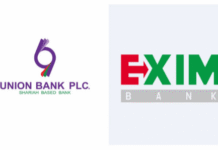Retaining its position as the 2nd largest RMG exporter
Bangladesh enters 2013 with a firm footing as the world's second largest garment exporter, raising hopes for a new wave of business despite turbulent times in parts of the globe.
The World Trade Organisation declared Bangladesh as the second largest RMG exporter after China in 2010-11 when the country's export grew 43.36 percent year on year to $15.66 billion in spite of global recession in 2007-2008.
Bangladesh retained its position in the following fiscal 2011-12 by exporting garments worth $19.09 billion. And the outlook for the current fiscal is set to exceed $20 billion.
Bangladesh now claims 4.8 percent of the global RMG trade of $412 billion.
According to McKinsey & Company, an international management consulting firm, Bangladesh's apparel exports will reach $36 billion by 2020.
Some key market players believe that the country's potentials are even greater.
But all these prospects appear to have been shaken by one fire tragedy in late November at Tazreen Fashions Ltd, where 112 workers were killed. This single incident exposed inadequate fire safety and poor working conditions that still exist in many factories.
The incident was widely covered worldwide mainly because of Bangladesh's position as the number two apparel exporter. The buyers are now pressing factory owners to improve working conditions, hike wages of workers, and ensure labour rights and other compliance issues.
Following the event, many international non-governmental organisations campaigned for restricting purchase of Bangladeshi garments until the garment makers here ensure workers' safety and labour rights.
The apparel sector may face some hurdles this year unless the issues of proper working environment, better wages and labour rights are resolved.
Exporters here still remain hostage to large-scale buyers, who always try to pay the lowest possible rate for apparel items. The garment makers need to persuade these buyers to pay more so that they can address the compliance issues at home.
In order to retain its position, Bangladesh has to ensure adequate supply of gas and power, make available industrial lands, combat corruption, improve infrastructure and port efficiency, ease traffic congestion and develop skilled manpower.
Several factors such as availability of cheap labour, quota facility, cash incentives against export and entrepreneurial skills have helped the RMG sector grow since the country's entry into the global market. Bangladesh enjoyed quota-free status till 1985.
Following the imposition of quota restriction by the USA and the EU, Bangladesh with enough manpower utilised its allocated quota to the full compared to neighbouring India, Pakistan, Sri Lanka and Nepal.
Bangladesh managed to supply garment items to international buyers at competitive prices without having two important basic requirements — cotton and machinery.
Now, Bangladesh is not only a supplier of basic garment, but also a major destination for high-end apparel items.
The strength of the country's apparel sector is well understood through its ability to supply high-end items to famous global brands such as Hugo Boss, Adidas, Puma, Tommy Hilfiger, G-Star, Diesel, Ralph Lauren, Calvin Klein, DKNY, Nike, Benetton and Mango. Currently, more than 30 percent of the total RMG export is high-end products.
The primary textile sector also saw a wave of investments for increasing demands for fabrics.
The sector with a total investment of over 4.5 billion pound is now capable of supplying 90 percent of fabrics for the knitwear sub-sector and 40 percent of fabrics for the woven sub-sector.
It took three decades of hard work for the country's garment sector to achieve its position today.
The journey started in 1978, with a shipment of 10,000 pieces of men's shirts worth 13 million Franc to a French company by Reaz Garments Ltd.
Desh Garment Ltd, the first fully export-oriented garment factory of the country, entered the global market the following year.
In 1980, South Korean Youngone Corporation formed the first joint-venture garment factory with a Bangladeshi firm, Trexim Ltd.
The number of garment factories in the country rose to 587 in 1984-85. With the arrival of many international buyers, the figure jumped to around 2,900 in 1999.
In 2005, Bangladesh with an increased number of production units became one of the 12 largest apparel exporters in the world.
Now, the country has more than 5,500 woven garment factories, 1,700 knitwear factories and 1,300 spinning, finishing and dyeing factories.
At present, the sector employs 3.5 million workers, 80 percent of whom are women.
The country's 60 percent RMG products enter the EU, 23 percent goes to the USA, 4.8 percent to Canada and 12.1 percent to other destinations worldwide.
According to data of Export Promotion Bureau, the RMG sector's contribution to the country's export was 3.9 percent in fiscal 1983-84, which now stands at nearly 80 percent.
The country's banking and financial institutions, and insurance and services sectors are largely dependent on the RMG sector.
Source: The Daily Star











CONGRATS to Bangladeshi workers and private entrepreneurs, and to those those who took steps to encourage private investments! It’s a long journey, but the country and its policy makers should proactive steps to regulate finance, trade, and safety issues promptly. They don’t have to reinvent the wheels, there are proven models in the US and other industrialized countries to copy, customize and implement. Once again, Hail to the Success of RMG industries!